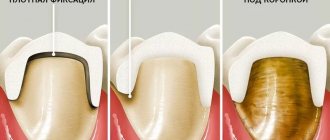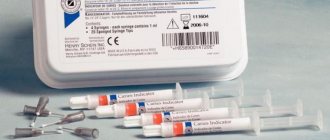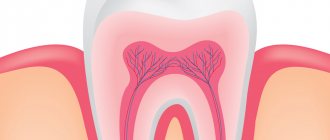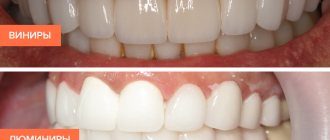Holes in the tonsils: causes
The structure of the tonsils is such that each of them has about 20 lacunae or small free cavities where pathogenic microbes must enter. This mechanism helps contain the virus, preventing it from passing further into the respiratory tract. For various reasons, holes can be seen on the surface of the tonsils.
In fact, this is nothing more than degenerated lymphatic tissue that closed the entrance to the lacuna. Most often, holes in the tonsils appear under the influence of the following factors:
- A recent viral disease, after which the tonsils have not yet had time to recover.
- Microbial infections leading to swelling of the lymphatic tissue of the tonsils and widening of the natural openings of the lacunae.
- Adenoids, against the background of which a chronic inflammatory process develops.
- Sinusitis, accompanied by a large accumulation of pus in the maxillary sinuses.
- Caries and other oral diseases.
- Deviation of the nasal septum from its correct position due to injury or congenital anomaly.
Under the influence of the conditions listed above, the body's defense reactions are reduced. Pathogenic microbes begin to actively multiply in the gaps, and plugs form that prevent the holes from returning to normal size even after recovery.
Why are holes in the tonsils dangerous?
Many people who find holes in their tonsils understand that this is a pathology, but do not attach much importance to it until their throat bothers them. This is wrong because the presence of holes in the throat destroys the defense mechanism and also allows pathogens to multiply freely. Even with minor inflammation, the following phenomena can be observed:
- An accumulation of purulent masses that, when examining the throat, look like white spots on the tonsils.
- Bad breath.
- Further spread of infection causing toothache, kidney damage, development of sinusitis, acute or chronic tonsillitis.
Hole in the tooth: why it appears, what it is like, how to detect it and what to do
A beautiful and healthy smile plays an important role in the life of every person, both from a practical and aesthetic point of view. Many people take care of their teeth, but not everyone adheres to the recommendations of specialists, relying solely on their own experience and advice from friends.
Caries or holes in teeth appear under the influence of pathogenic microorganisms that inhabit the oral cavity. However, neither a toothbrush nor floss can completely get rid of bacteria.
In places where they accumulate, depressions are formed, which, growing larger, turn into holes.
If you consult a dentist in time, the problem can be solved very quickly; in advanced cases, treatment will be long and painful.
Causes of holes in teeth
Ideal crowns have a flat and smooth surface. Food particles that are not removed during brushing become food for microorganisms. They multiply and create a film on the teeth (plaque). Over time, plaque thickens and hardens, turning into tartar (see.
See also: what are the causes of tartar?). The bacteria living in it actively multiply, releasing a special acid during their life, which can damage tooth enamel. Once bacteria manages to penetrate the dental tissue, a small hole appears.
READ ALSO: why does black plaque appear on teeth and how to remove it?
The reason for the formation of holes in the tooth is the abundance of pathogenic microorganisms in the mouth. Bacteria feed on carbohydrates, which is why sugary foods and drinks are so bad for your teeth.
Usually a person does not notice how the initial stage of caries develops - at this stage there are no pronounced symptoms. A doctor can understand that there is something wrong with your teeth. Yellow or white spots may appear on the crowns.
After some time, if nothing is done, the patient begins to experience severe pain when eating sour or sweet foods.
Risk factors for holes in teeth:
- Physiology. All people have different quality of enamel, jaw structure, interdental spaces and saliva composition. If the crowns are pressed tightly against each other, conditions favorable for microorganisms are created, since it will be very difficult to clean out food debris between the teeth. Malocclusions can lead to rapid wear of enamel.
- Geographical location. It is known that people living in different countries face dental problems to a greater or lesser extent. For example, almost every resident of the United States suffers from dental diseases, and only 60% of the Russian population has dental problems. Nigerians are luckier - their figure is about 2%.
- Nutrition. People who eat high-carbohydrate foods and foods with added preservatives, dyes and other food additives have a much higher risk of developing tooth decay than those who prefer a balanced diet.
- Gender. Women are more at risk of developing holes in their teeth than men. This is largely due to the influence of hormonal levels during pregnancy and breastfeeding. You can also note the love of women for flour and sweets.
Separately, it is necessary to highlight another reason why people suffer from oral diseases. Some medications used regularly remove fluid from the body, which leads to dry mouth. A decrease in the amount of saliva and an increase in its viscosity do not allow food debris and acid secreted by bacteria to be completely washed away.
Types and stages of development of holes, accompanying symptoms
Most patients with caries experience similar symptoms:
- the appearance of dark spots on the tooth surface;
- increased tooth sensitivity;
- pain during cleaning;
- the appearance of bad breath;
- Difficulty removing food debris from interdental spaces.
Based on the examination results and symptoms, the doctor determines the stage of caries:
- Initial. Characterized by the appearance of dark plaque on the teeth. The problem is eliminated by applying a special solution to the teeth and adjusting the diet.
- Superficial caries. There is minor damage to the enamel. The surface of the tooth becomes rough. The patient experiences increased tooth sensitivity due to temperature changes.
- Average. At this stage, the carious process affects not only the enamel, but also the dentin located underneath it. A small black hole in the teeth is already clearly visible. Food particles become clogged into the resulting hole. The patient may experience pain that even analgesics do not help.
- Deep caries. The hole in the tooth becomes larger due to softening of the dentin (see photo). Touching the bottom of the resulting cavity causes severe pain. The pulp becomes inflamed and pulpitis develops.
Diagnostic methods
The appearance of pain or other unpleasant sensations in the mouth is a reason to consult a dentist. When examining the oral cavity, the doctor uses a dental mirror and probe. The following diagnostic methods can also be used:
- caries test;
- radiography;
- cold test, etc.
How are large and small holes in teeth treated?
At the initial stage, therapeutic treatment of caries is reduced to strengthening tooth enamel - fluoridation helps restore its mineral composition. As an alternative, calcium gluconate applications may be prescribed. Often, to enhance the therapeutic effect, the patient is referred for electrophoresis. Chronic caries at the initial stage does not require dental treatment.
Superficial caries is treated by installing fillings. The specialist removes tissue damaged by carious formations, drilling a cavity of the required shape and size for better fixation of the filling. Then the tooth cavity is treated with antiseptics, after which it is dried, and the doctor installs a filling.
Filling is carried out regardless of the location of the resulting depression. The patient retains the right to choose the filling material.
When the pulp is inflamed, doctors most often recommend removing the nerve and then cleaning the canals. This procedure is performed under local anesthesia and is called depulpation.
Once access to the affected area is open, the doctor can proceed with removal if the patient does not experience pain. Otherwise, an additional dose of anesthetic is administered, or the hole is treated with formaldehyde paste.
The final stage of dental treatment is filling.
Deep caries often leads to the development of periodontitis. In this case, the tooth can rarely be saved. Dental treatment involves restoring bone tissue. Tooth canals are treated with antiseptics, antibiotics and other medications.
As soon as the inflammation can be removed, the canals are sealed. The coronal part is artificially restored, while it looks natural. Complex treatment requires subsequent monitoring by the attending physician.
Once a year, for preventive purposes, you need to take an x-ray of the treated tooth.
It is important to start caries treatment on time. If in the initial stages of the development of the disease the problem can be quickly and painlessly eliminated, even without using anesthetics, then inflammation of the pulp and other complications of caries can lead to tooth loss. That is why experts recommend visiting the dental office twice a year, even in the absence of complaints.
Source: https://AzbukaZubov.com/stomatolog/bolezni/dyrka-v-zube-chto-delat.html
Severe tonsillitis tonsillitis
The most serious pathology caused by the active reproduction of streptococcus or the penetration of viruses of various natures is considered to be sore throat. It is very important to diagnose in time to prevent the development of serious complications.
As a result of normal hypothermia, a person’s immunity weakens, and bacteria and viruses begin to actively colonize new territories. With an advanced cold, tonsillitis develops, the signs of which are:
- Weakness, headache, fever. Body temperature rises to 39 C.
- Sensation of a foreign body in the throat, difficulty swallowing saliva and eating.
- Change in color of the tonsils to red, increase in their size, loosening, whitish coating.
- In places where there were pits, nodules filled with pus can be seen on the tonsils, which are opened as a result of regular rinsing.
- The lymph nodes in the neck enlarge, which the specialist feels upon palpation.
Tonsillitis is not only a consequence of the inflammatory process if there are holes in the tonsils, but in itself actively contributes to the formation of new depressions. It is very important to treat sore throat thoroughly and promptly in order to prevent pathologies such as damage to the heart, kidneys, joint and bone tissues.
Methods for diagnosing problems with tonsils
An initial examination of a patient who has contacted a therapist with complaints about holes appearing in the tonsils cannot identify the specific reason for the persistence of these holes at the entrances to the lacunae. It is important to conduct additional examinations to understand what inflammatory process is preventing the throat tissue from recovering. Most often, the doctor prescribes the following procedures:
- A complete blood count to check the levels of red blood cells, platelets and white blood cells. If the readings are deviated from the norm, an inflammatory process occurs in the patient’s body, from sepsis caused by pus entering the blood to cancer.
- A general urine test also shows the presence of a pathological process that reduces immunity and interferes with the normal functioning of the tonsils.
- A smear to obtain epithelial cells of the pharynx. It helps determine which microorganisms are causing concern to the patient.
- Biochemical blood test to obtain information about the condition of the body as a whole.
Holes in the tonsils: treatment methods
To get rid of pits on the tonsils and protect yourself from the development of complications due to the inflammatory process, you will need to undergo a course of treatment with a complex of medications and folk remedies. Their use must be strictly coordinated with the therapist, who will calculate the dosage and duration of medication and monitor changes in the situation. If the effect of therapy is not observed, the prescription will need to be adjusted.
To treat inflammation of the tonsils, use:
- Antibiotics that help reduce the activity of pathological bacteria, if the results of a throat smear reveal precisely this reason for the expansion of lacunae in the tonsils. Also, drugs in this group are prescribed in case of accumulation of pus in the openings. The most popular medications are Amoxicillin and Amoxiclav in the absence of individual intolerance to penicillin. In case of allergies to these drugs, Sumamed, Erythromycin and other macrolide antibiotics are prescribed.
- To irrigate the oral cavity and eliminate microbes in the affected areas, Hexoral and Stopangin sprays are used. It is important to check their compatibility with tablets with your therapist.
- If discomfort in the throat is caused by a virus, the nature of which is established as a result of diagnosis, antiviral drugs Acyclovir, Arbidol, Amiksin, Peramivir are prescribed. The purpose depends on the type of infection.
- Saline solution or Sodium Chloride for rinsing the mouth and throat. This procedure will help remove pus from the lacunae on the tonsils and food debris. This treatment is carried out in a treatment room using a special syringe.
- Gargling with Miramistin or Furacilin can be done every two to three hours at home.
- Means for increasing the body's defense reactions containing interferon.
- Multivitamin preparations that increase immunity.
These are the main medications that will help eliminate the inflammatory process in the tonsils. Their use should be carried out under the supervision of a physician. Some drugs can cause an allergic reaction, so self-medication is strictly contraindicated.
Treatment methods
You can get rid of holes in the tonsils filled with pus only by eliminating the true cause of the inflammatory process. Self-medication in such cases is contraindicated, since only an experienced doctor will be able to provide complex therapy, minimizing serious complications.
Taking antibiotics
When pus accumulates in the lacunae, broad-spectrum antibacterial drugs are used, which not only inhibit the proliferation of bacteria, but also completely destroy them. Depending on the type of pathogenic pathogens, drugs such as Azithromycin, Tsiprolet, Amoxicillin are prescribed.
Washing tonsils in the ENT office
To clean them of purulent plugs, a syringe with a special attachment is used, which directs the disinfectant composition directly into the lacunae. A jet under pressure knocks out the plugs, and the tonsils are cleared. For full results, at least 15 sessions are required.
Vacuum lavage of the tonsils is carried out under local anesthesia using a device. A special nozzle is attached to the tonsil, and the purulent contents are sucked out through it. The tonsils are then treated with an antiseptic to prevent relapse.
Another device, Tonsilor, is actively used by doctors to treat purulent tonsils. The impact on the tonsils is carried out using ultrasound and vibrations transmitted by a special attachment. When the purulent plug becomes pliable, it is washed out with a medicinal solution, which is delivered in a strong stream.
Physiotherapy
The most popular and effective procedures are using:
- ultraviolet rays, which have a powerful antibacterial effect;
- laser, which activates blood and lymph flow in the tonsils, relieves inflammation;
- ultrasound, with the help of which medications penetrate deep into the tissue of the tonsils.
Also, throughout the entire treatment, the doctor prescribes rinsing the mouth and throat with antiseptic solutions (Furacilin, Miramistin), taking immunostimulating drugs, and vitamin complexes.
Prevention
To ensure that medication treatment and rinsing do not have to be repeated, simple rules of oral hygiene should be followed.
- It is important to brush your teeth regularly in the morning and evening to remove food debris. After each meal, you need to rinse your mouth with plain water or a special solution.
- It is also recommended to review your daily routine, give up bad habits and take measures to improve your immunity.
- It is advised to think through your wardrobe so as not to overcool, provoking the proliferation of pathological bacteria.
Holes in the tonsils appear due to certain diseases and weakening of the body's protective functions. They can also in turn become the source of numerous health problems. If pits are detected on the tonsils, it is important to consult a physician to undergo diagnosis and treatment.
Invisible darning
On any clothing, but especially on knitwear, a tiny hole can appear out of nowhere and ruin the whole look. Most often they are discovered after washing. The thing is good, but you can no longer wear it, what should you do?
To prevent the hook from increasing in size, we will try to sew it up so that it is not visible. If you start working with simple threads, you can pull the material together and this place will catch your eye.
Let's not rush.
- Take the thinnest needle, the one used by bead embroiderers.
- Find tights that match the color of your T-shirt or are neutral.
Stages of work:
- Pull the thread out of the tights.
- Thread the needle using a threader. Don't tie a knot!
- We work from the front side of the product. Carefully collect all the loops with a needle. We catch them from below and from above, one loop at a time, then make a stitch without pulling the fabric.
- After finishing the darning, bring the needle to the wrong side.
- Secure the thread with a couple of stitches, then cut it off.
- Let's straighten the fabric and iron the repair area from the inside out. The nylon thread will melt slightly under the influence of high temperature, thereby closing the hole.











